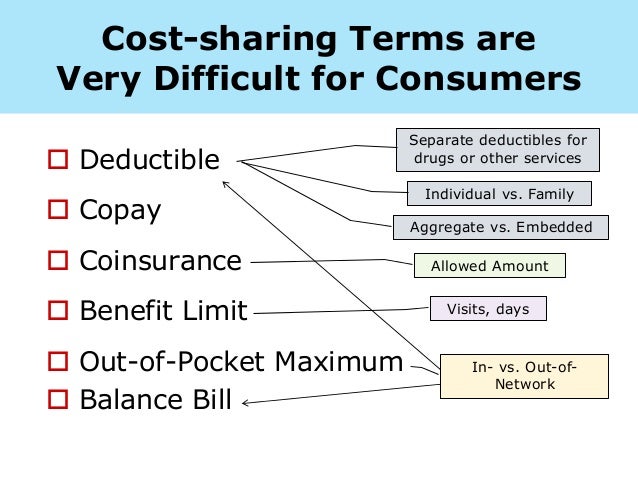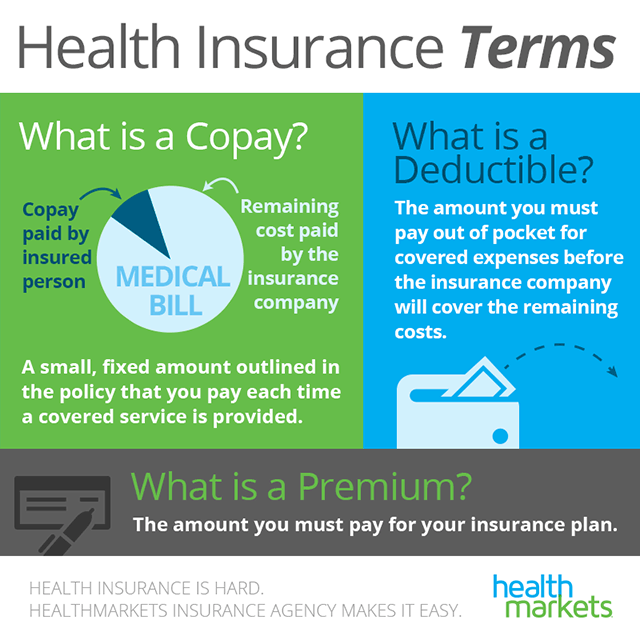
© TheStreet What is Coinsurance and How Is it Different From Copay?
$10 or $20 copay/ visit; deductible does not apply $30 or $45 copay/ visit; deductible does not apply coinsurance Cost sharing does not apply for preventive services. Depending on the type of services, a copayment, coinsurance, or deductible may apply. Maternity care may include tests and services described elsewhere in the SBC (i.e. Part A Deductible and Coinsurance Amounts for Calendar Years 2020 and 2021 by Type of Cost Sharing 2020. Inpatient hospital deductible. Daily coinsurance for 61 st-90 th Day. Daily coinsurance for lifetime reserve days. Skilled Nursing Facility coinsurance.
- Jace Estremera Week 13 Assignment April 10, 2021 Features of Health Insurance Plans Copays and deductibles are features of health insurance plans. They involve payment on the part of the insured, but the amount and frequency differ. A copay, short for copayment, is a fixed amount a healthcare beneficiary pays for covered medical services (O’Sullivan et.
- While copay, deductible and coinsurance are cost-sharing terms, their applicability can make a huge difference to your overall health insurance plan. Deductibles and coinsurance are clauses that are mostly implemented together under one single insurance plan. But, a few insurance plans also implement copayment and deductible clauses simultaneously.
For such an important part of the average American's life, health insurance can get incredibly, frustratingly complicated. Rather than simply having the comfort of knowing you are covered for your medical needs, you're expected to understand a variety of terms in order to know what's covered, how much you're covered for and what you'll have to pay for.

One such term is coinsurance, a vague term without any added context. But coinsurance involves both you and your insurance provider, and so it's important to understand what it is and how it functions in the insurance process. Should you require a medical procedure, knowing your coinsurance can help you get a better approximation of how much you'll have to pay, and where to go from there.
So what is coinsurance, and what separates it from other figures in your health insurance?
What Is Coinsurance?
Coinsurance is the amount you will pay for a medical cost your health insurance covers after your deductible has been met.
Your deductible, if you weren't aware, is the amount you have to pay before insurance kicks in to help pay. In health insurance, your deductible can get spread to multiple costs or one single cost until it runs out. Once you've reached your deductible, that's when insurance comes in. But in healthcare, you also have the coinsurance to deal with.
Coinsurance is measured as a percentage of what you will pay of the remaining costs compared to what insurance will. Perhaps the most common percentages here are 80/20 - that is to say, your provider will pay 80% of it, and you will pay 20%. Another common set up is 70/30 (you pay 30%).
What Is Coinsurance Mean
Coinsurance comes into play when your deductible runs out, and depending on your deductible and your medical history, that amount of time could fluctuate wildly. Someone with a history of medical issues may choose a lower deductible plan (though these tend to have higher premiums) because they anticipate future costs, while someone without a troubling history may be more willing to enroll in a high deductible health plan to avoid high premiums, under the assumption that it is unlikely something major will come up.
Does Your Coinsurance Affect Out-of-Pocket Maximums?
Knowing your deductible is crucial for your health insurance, but once you've reached the end of your deductible you should know your out-of-pocket maximum. That is the maximum amount of overall money you have to pay before your insurance company covers all of the costs.
The money you are personally paying when coinsurance gets factored in does, in fact, go toward your out-of-pocket maximum. So let's say you have a deductible of $1,500 and an out-of-pocket maximum of $5,000. You reach that deductible, and the remaining medical costs you owe lead to $300 out of your own pocket due to coinsurance. Combined, this would mean you've paid $1,800 of your $5,000 out-of-pocket maximum.
So while coinsurance can be a bit of a nuisance, more money you have to take from your own pocket put toward medical costs, it is supposed to have a beneficial purpose of bringing you closer to your maximum. How much your out-of-pocket maximum will be will depend on the sort of insurance plan you end up enrolling in.
Example of Coinsurance
Does Copay And Coinsurance Count Towards Deductible
Video: How banks actually make money (CNBC)
Let's bring a few figures in to provide a real-life example. Let's say that your healthcare plan has a deductible of $1,000, and you have an 80/20 coinsurance clause.
With this information, say you incur $2,500 in medical costs. You haven't had to use your deductible prior to this, so all $1,000 of it goes toward this cost. From there, we're left with $1,500. How much of this will you be paying via the coinsurance clause?
$1,500 x 20% = 1,500 x 0.2 = $300
Your coinsurance payment here would be $300. Combined with your deductible, that means you would be paying $1,300 to the insurance company's $1,200.
This is why understanding your coinsurance clause is crucial. You're paying much less than you would without insurance, but in this example you still had to pay for more than half of the costs.
If you end up with other medical costs that your insurance covers, though, your deductible is no longer a factor and you would just have to pay the 20% via your coinsurance clause. So if your next medical costs that year are $1,200, you'd only pay $240 of it.
These, however, may be minor examples compared to what medical expenses you may have to deal with. You still have to reach your out-of-pocket maximum before your insurance company starts to cover 100% of the costs. Generally, your out-of-pocket maximum correlates inversely with your premiums. Much like with deductibles, those with higher premiums have lower maximums and those with lower premiums will likely have higher ones.

Coinsurance vs. Copay
Coinsurance and copay, as similar-sounding terms for your healthcare, may be a little confusing. Though they share similarities, they're ultimately different plans for your insurance.
Whereas coinsurance is the percentage you pay for medical costs after your deductible, your copay is a set amount you have to pay for other covered expenses. For example, a prescription medicine can have a copay, as can a physical or other visit to your primary care physician (PCP). Where a coinsurance plan might have you pay 20% for this doctor's visit, a plan with a copay may instead require you to pay a flat fee of $20 while they pay for the rest of it. Depending on the specific figures involved in your specific plan, a copay could be more or less than what the coinsurance is for any given medical cost.


That said, in other ways coinsurance and copay plans are quite similar. Generally copayments, like coinsurance, do not go toward your deductible but do go toward your out-of-pocket maximum.
Copay Coinsurance And Deductible Examples

Coinsurance in Other Insurance Industries
Coinsurance is most prevalent in the health insurance industry. But coinsurance is a way for insurance companies to try and mitigate risk in the event that expenses add up more than they anticipated, so it's not uncommon for you to find coinsurance in other insurance industries as well.
For example, you may find a coinsurance clause when dealing with property insurance. In this industry, the coinsurance dictates that the property must be insured for a percentage of its value. This is particularly common in commercial property.
Much like in health insurance, 80% coinsurance is the most common percentage. That meant if you had a $500,000 property, you would need to insure it for, at the very least, $400,000.
Let's say, though, that you didn't do that. You decided to only insure it for $300,000 in an attempt to save money on the deal. This could lead to a costly coinsurance penalty if something goes wrong.
You should have insured it for $400,000 but only went as far as $300,000 to insure your property (and you have a deductible of $2,000). Now let's say a pipe bursts in the building, causing excessive damage that totals up to $200,000. Your insurance will, when reviewing the case, notice you did not get the amount of insurance the coinsurance clause required and will impose a penalty.
To figure out the penalty, your insurance will divide the amount of insurance you got by how much you were supposed to (in this case, 300,000/400,000 or 0.75) and multiply that by your damage. 200,000 x .75 = $150,000, which is how much your insurance will pay. Thus, here your coinsurance penalty is a whopping $50,000.
Copay Coinsurance And Deductible 2019
This article was originally published by TheStreet.